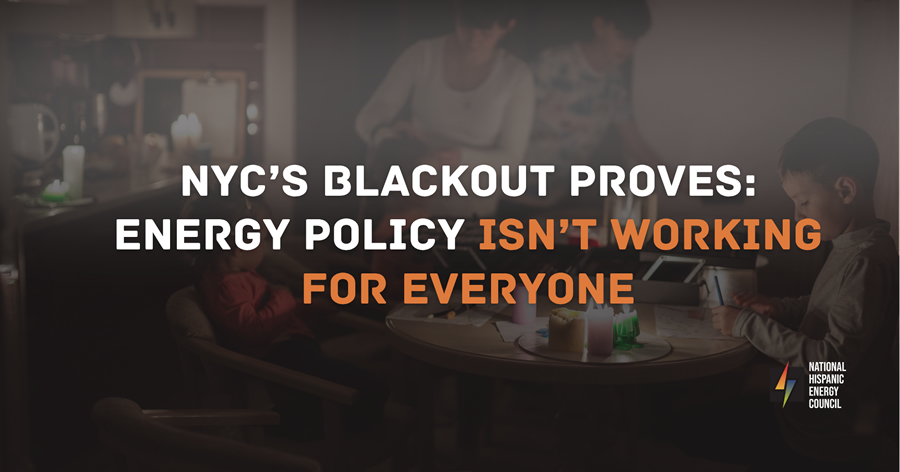When thousands of New Yorkers lost power on Monday during extreme heat, many people were left struggling to get through the day. Elevators stopped, air conditioning failed, and in neighborhoods across the Bronx and Queens, families were left in the dark—literally and figuratively.
For many Hispanic communities, this wasn’t new. These neighborhoods have faced years of rising energy costs, aging buildings, and limited infrastructure investment. But this latest blackout was a clear reminder of what happens when energy policy moves forward without considering who’s most at risk when systems fail.
The Power Went Out—But the Real Problem Was Already There
During the heatwave, electricity use in New York City surged to a 14-year high. Utility providers urged residents to conserve power as blackouts spread across the city. Most of the outages occurred in lower-income areas—places where many Hispanic families live, work, and run businesses.
At the same time, a large battery storage facility—meant to support the electric grid—failed just days before it was supposed to go live. Instead of offering relief, the system shut down due to a safety issue, leaving the grid even more vulnerable at the worst possible time.
Why Hispanic Communities Feel It First
New York’s Hispanic population makes up nearly 30% of the city, and many live in older apartment buildings with limited insulation, outdated wiring, or shared meters. When the power goes out, these buildings heat up fast. For families with children, for seniors, or anyone relying on medical equipment, that kind of heat isn’t just uncomfortable—it’s dangerous.
For small businesses, outages often mean lost income. Bodegas, salons, and family-run storefronts don’t have the flexibility to close for the day and just absorb the loss.
Many of these same households are already dealing with high utility bills. According to research from The City University of New York, Latinos in New York have the highest poverty rate of any racial or ethnic group in the city. When power failures are layered on top of rising costs, the result is a cycle of hardship that feels impossible to escape.
Infrastructure Must Come Before Mandates
New York is moving quickly to electrify buildings and reduce carbon emissions. That’s an important goal, but without strengthening the grid first, those policies put people at risk.
Banning natural gas in new construction and retiring traditional power plants won’t work if the replacement systems aren’t proven, reliable, and safe. In neighborhoods that already experience disinvestment, failing to upgrade energy infrastructure while adding more demand to the grid is a recipe for more blackouts—and more harm.
And it’s not just New York. During the same heatwave, other parts of the country also faced grid strain and energy emergencies. This is a national issue with local consequences.
What We Need for a Fairer Energy Future
At the National Hispanic Energy Council, we believe in a clean energy future—but it has to work for everyone, not just the most privileged or well-connected. That starts with policies that reflect how families live today, not how systems are expected to perform years from now.
We need:
- A stronger grid that can meet real demand
- Access to reliable energy sources, including natural gas
- Safe, tested battery storage systems—not rushed solutions
- Investment in the neighborhoods most vulnerable to energy failure
- Hispanic voices at the table when energy policy is being made
The Bottom Line
Energy equity is more than a buzzword—it’s about fairness, safety, and opportunity. When the lights go out in Hispanic communities, it’s not just an inconvenience. It’s lost wages, lost time, lost food, and in some cases, a threat to health.
The blackout in New York wasn’t just about heat. It was about what happens when we build systems that leave entire communities out. Let’s not call it progress if it doesn’t reach everyone.
